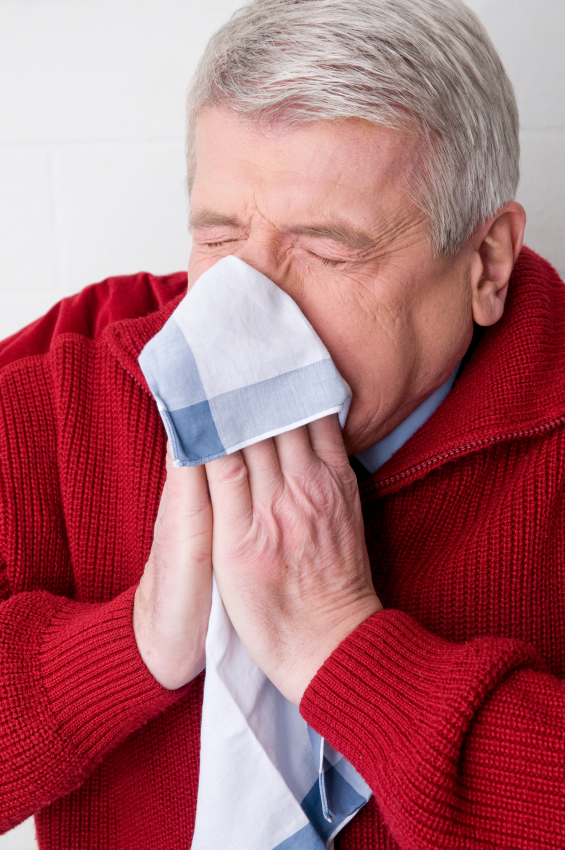Is your immune system healthy? If you are prone to colds or the flu during colder months then your immune system is in sub-optimal condition. Good news: if you take vitamin D you may reduce your risk of infection, says an accumulating body of research.
Is Immunodeficiency Vitamin D Deficiency?
Most of us have heard that we can make our own vitamin D with exposure to UV light from the sun. However, what is not well known is that the vitamin D manufactured in our skin needs to be converted to an active, useable form before it does us any good. Once converted, vitamin D’s immune-building benefits stem from its ability to alter the function of most tissues. Adequate vitamin D status is associated with improved resistance to infections and healing of infections; meanwhile deficiency in this nutrient is linked to a weakened immune response.
How does it work? It appears that vitamin D increases the production of anti-microbial proteins that provide a natural defense against disease-causing bacteria and viruses.
Low serum vitamin D levels are associated with an increased incidence of upper respiratory tract infections (URTIs). This is not surprising, given that vitamin D production within the skin is initiated by exposure to ultraviolet light and the fact that UV light was successfully used to treat tuberculosis of the skin in the early 20th century.
Kids Need Vitamin D, Too
 In a pediatric respiratory health study of 197 children, the acute lower respiratory infections (ALRIs) of bronchiolitis and pneumonia were correlated with low vitamin D status. Specifically, the mean average vitamin D level for infected children admitted to the pediatric intensive care unit was significantly lower than that observed for both the control (non-infected) group and ALRI subjects who were admitted to the general pediatrics ward.
In a pediatric respiratory health study of 197 children, the acute lower respiratory infections (ALRIs) of bronchiolitis and pneumonia were correlated with low vitamin D status. Specifically, the mean average vitamin D level for infected children admitted to the pediatric intensive care unit was significantly lower than that observed for both the control (non-infected) group and ALRI subjects who were admitted to the general pediatrics ward.
Even other types of infection may be linked to low vitamin D status. In a study of 469 pregnant women, lower blood levels of vitamin D were associated with higher incidence of bacterial vaginosis—a relatively common vaginal infection found in expectant women.
How much vitamin D should a person take?
The amount you make depends on age, skin colour and of course, how much time you spend in sunshine. Some of the most recognized vitamin D researchers, such as Vieth, Holick and Bischoff-Ferrari agree that a minimum 25(OH)D blood concentration of 30 ng/mL (75 nmol/L) appears necessary to experience the multitude of beneficial health effects of the vitamin. Depending on your health status, it may take as little as 400 i.u. or as much as an extra 5,000 i.u. of vitamin D consumption daily to reach these optimal levels.
Ask your doctor to measure your blood levels of vitamin D to find out if what you’re getting is adequate for disease prevention or management. It will only set you back $30 to find out. If you fail, you won’t have to pay for the follow up test (here in Ontario). But be sure to ask for a copy of the result, not just whether it’s a pass or a fail!
Vitamin D is just one of many nutrients involved in creating a healthy immune system. Be sure to take a multivitamin and mineral supplement to avoid deficiencies in other important ones.
References
Shah S, Islam MN, Dakshanamurthy S, et al. The molecular basis of vitamin D receptor and betacatenin crossregulation. Mol Cell 2006;21:799-809.
Bartley J Vitamin D, innate immunity and upper respiratory tract infection. J Laryngol Otol. 2010 Jan 13:1-5.
McNally JD, Leis K, Matheson LA, Karuananyake C, Sankaran K, Rosenberg AM. Vitamin D deficiency in young children with severe acute lower respiratory infection. Pediatr Pulmonol. 2009 Oct;44(10):981-8.
Bodnar LM, Krohn MA, Simhan. Maternal vitamin D deficiency is associated with bacterial vaginosis in the first trimester of pregnancy. HN.J Nutr. 2009 Jun;139(6):1157-61.
Holick MF. Vitamin D deficiency. N Engl J Med 2007;357:266-281.
Vieth R. What is the optimal vitamin D status for health? Prog Biophys Mol Biol 2006;92:26-32.
Bischoff-Ferrari HA, Giovannucci E, Willett WC et al. Estimation of optimal serum concentrations of 25-hydroxyvitamin D for multiple health outcomes. Am J Clin Nutr 2006;84:18-28. Erratum in: Am J Clin Nutr 2006;84:1253. dosage error in abstract. Am J Clin Nutr 2007;86:809.
